Caring for Euonymus plants, renowned for their vibrant fall colors and year-round appeal, are a gardener’s delight, offering a plethora of varieties to suit diverse landscaping needs. These plants are not just about their aesthetic appeal; they are versatile and adaptable, making them a valuable addition to any garden setting.
Whether you are a seasoned gardener or a beginner exploring the world of plants, Euonymus species bring a unique charm and vibrancy to your garden, ensuring a colorful display across seasons.
In this blog, I will tell you about the many faces of Euonymus plants, exploring their origin, characteristics, varieties, and the essential aspects of their cultivation and care.
Let’s get started!

Understanding Euonymus Plants and Their Care
Euonymus, belonging to the family Celastraceae, is a diverse genus comprising approximately 130 species and numerous cultivars, each with its unique features and adaptability.
Originating primarily from East Asia, the Himalayas, and Australia, Euonymus plants have traversed continents, finding a place in gardens worldwide due to their vibrant colors and varied forms.
The name ‘Euonymus’ is derived from the Greek words ‘eu,’ meaning good, and ‘onoma,’ meaning name, symbolizing the plant’s esteemed status among gardeners and landscapers.
Euonymus plants are celebrated for their adaptability and resilience, thriving in various soil types and weather conditions. They exhibit a range of growth habits, from ground covers and shrubs to small trees, allowing gardeners to choose the right fit for their landscape design.
The leaves of Euonymus plants are usually opposite or alternate, and their unique fruiting bodies, often in vibrant shades of pink, red, or orange, add a splash of color to gardens in the fall.

Types of Euonymus Plants: A Detailed Exploration
Caring for Euonymus plants, with their myriad of forms, colors, and growth habits, offer a plethora of options for gardeners and landscapers. Each type brings its unique charm and characteristics, catering to diverse aesthetic preferences and functional needs.
Euonymus Alatus (Burning Bush)
- Description and Features: Euonymus alatus, commonly known as the Burning Bush, is renowned for its spectacular fall coloration, where the leaves turn vibrant shades of red and pink, resembling a burning flame. This deciduous shrub can grow up to 20 feet tall and wide, making it suitable for hedges and screens.
- Landscape Uses: Ideal for creating dramatic focal points in the garden, especially in the fall. It can also be used for erosion control on slopes and banks.
- Care: Prefers well-drained soil and full sun to partial shade. Pruning is essential to maintain shape and size.
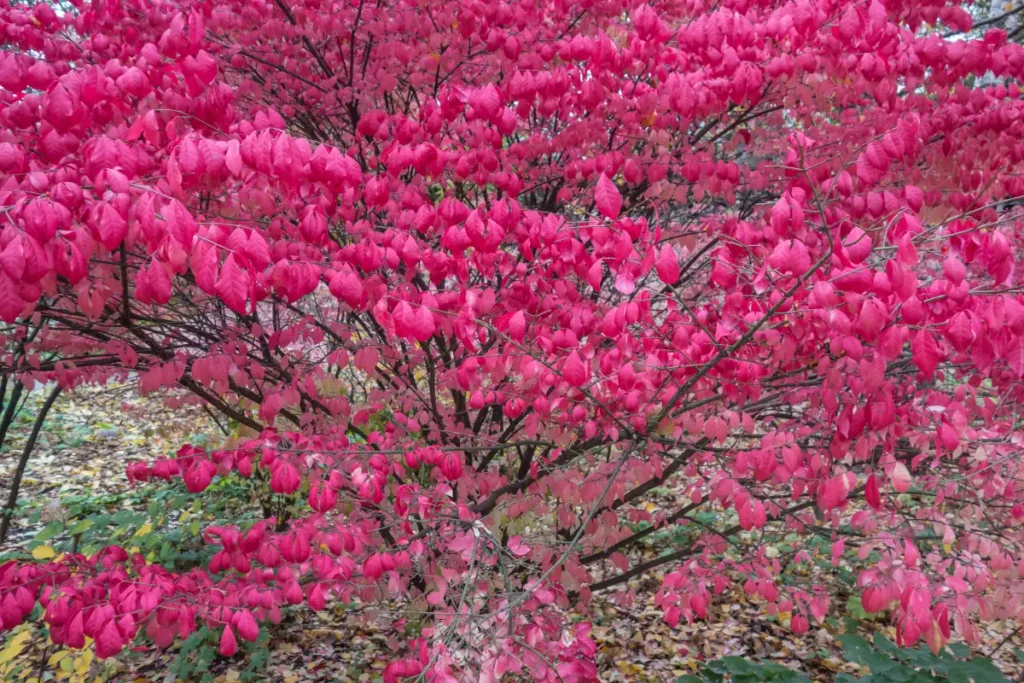
Euonymus Fortunei (Wintercreeper)
- Description and Features: Euonymus fortunei is a versatile species that can be grown as a ground cover, vine, or shrub. It features evergreen leaves and displays a high tolerance to shade, making it suitable for various landscape settings.
- Landscape Uses: Excellent for covering walls and fences or as a ground cover in shaded areas. Its adaptability makes it a popular choice for urban landscapes.
- Care: Adapts to different soil types but thrives in moist, well-drained soil. It requires minimal pruning and is relatively low-maintenance.
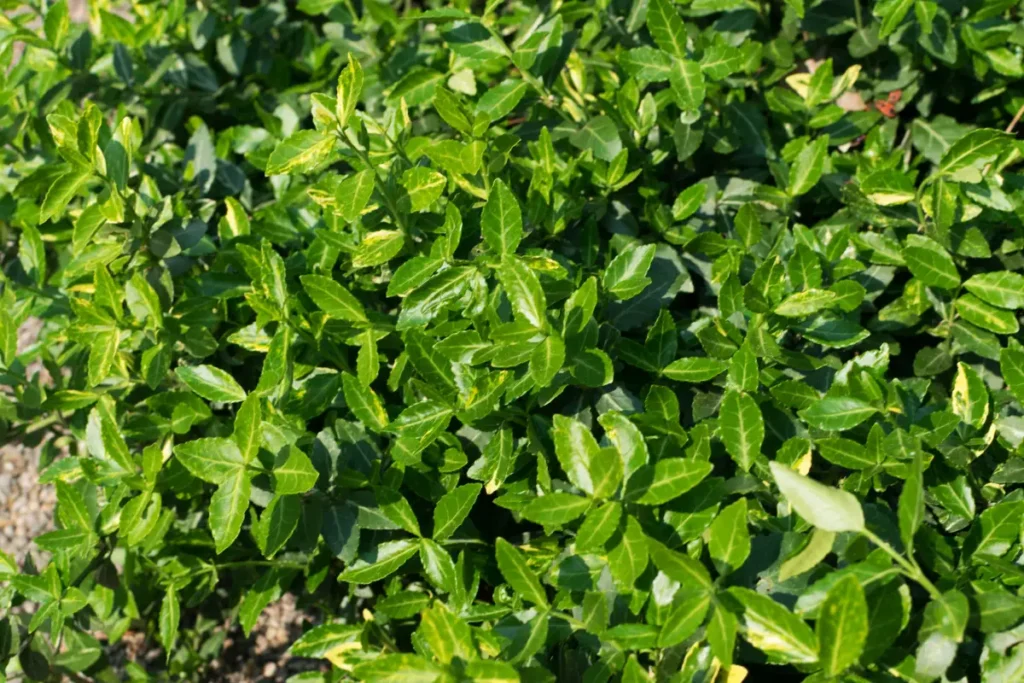
Euonymus Japonicus (Japanese Euonymus)
- Description and Features: Euonymus japonicus is prized for its glossy, evergreen leaves and is often used as an ornamental shrub. It can grow up to 15 feet tall and is resistant to deer and drought.
- Landscape Uses: Ideal for creating structured hedges and screens or as a standalone shrub in garden beds and borders.
- Care: Prefers well-drained soil and performs best in full sun to partial shade. Regular watering and fertilization are essential for optimal growth.
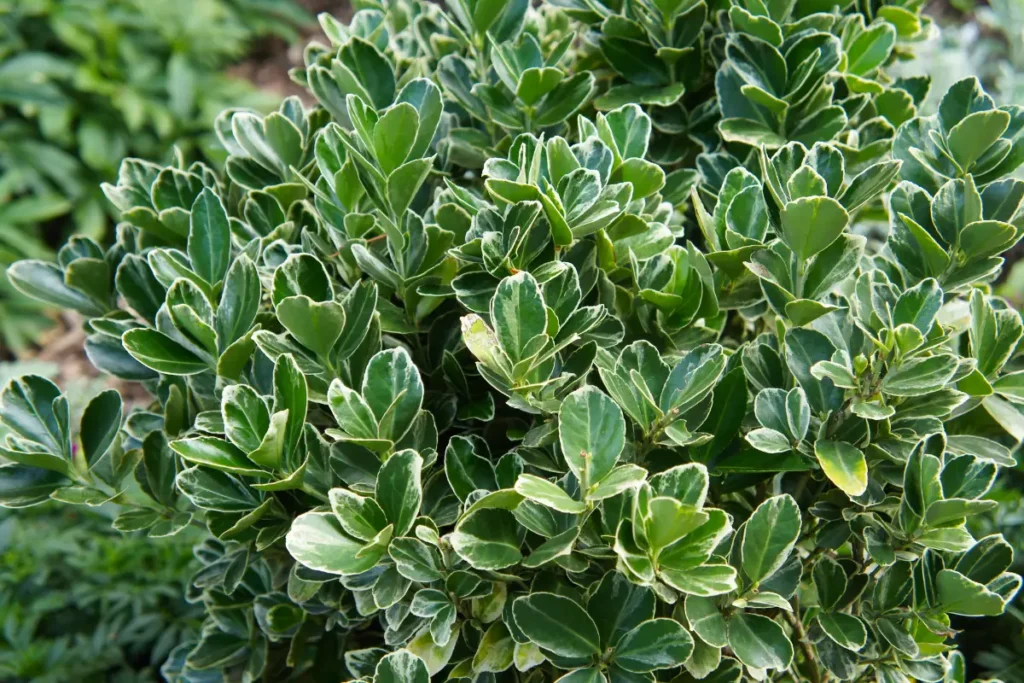
Euonymus Europaeus (European Spindle)
- Description and Features: Euonymus europaeus is a deciduous shrub known for its distinctive pink and orange fruits and vibrant fall colors. It can reach up to 20 feet in height and is attractive to birds and butterflies.
- Landscape Uses: Suitable for wildlife gardens and naturalized areas, providing food and shelter for various fauna.
- Care: Thrives in well-drained soil and full sun. It requires minimal maintenance, with occasional pruning to remove dead or damaged branches.
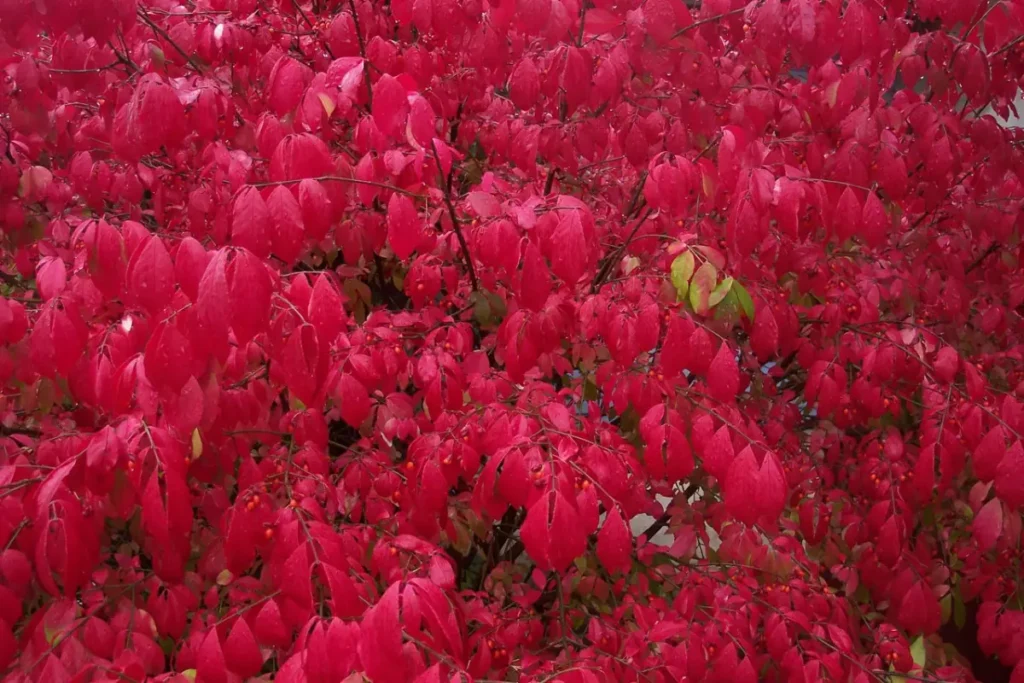
Euonymus Hamiltonianus
- Description and Features: This species is known for its attractive fall foliage and colorful, pinkish fruit. It can grow up to 30 feet tall, making it one of the larger Euonymus species.
- Landscape Uses: Ideal for large gardens and parks, where its height and spread can be accommodated. It can also be used as a specimen tree.
- Care: Prefers moist, well-drained soil and full sun to partial shade. Regular watering and fertilization are crucial for healthy growth.
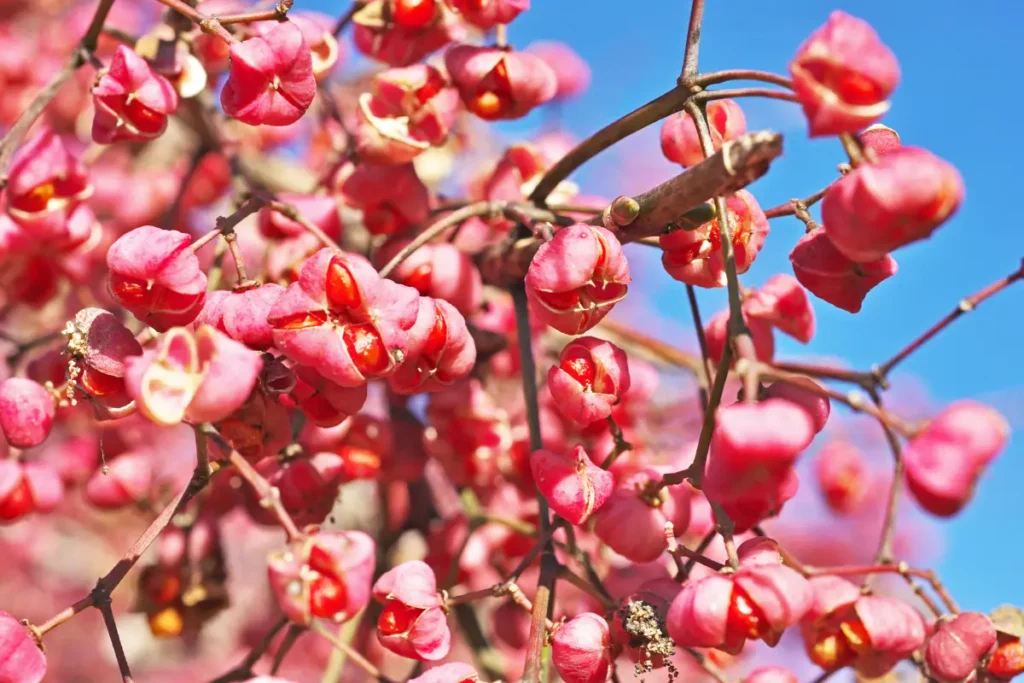
Euonymus Oxyphyllus (Korean Euonymus)
- Description and Features: Euonymus oxyphyllus is a rare species, valued for its unique, leathery leaves and large, red fruits. It is a deciduous shrub, growing up to 15 feet tall.
- Landscape Uses: Suitable for creating interest in the garden, especially during the fruiting season.
- Care: Requires well-drained soil and partial to full sun. It benefits from regular watering and protection from harsh winds.
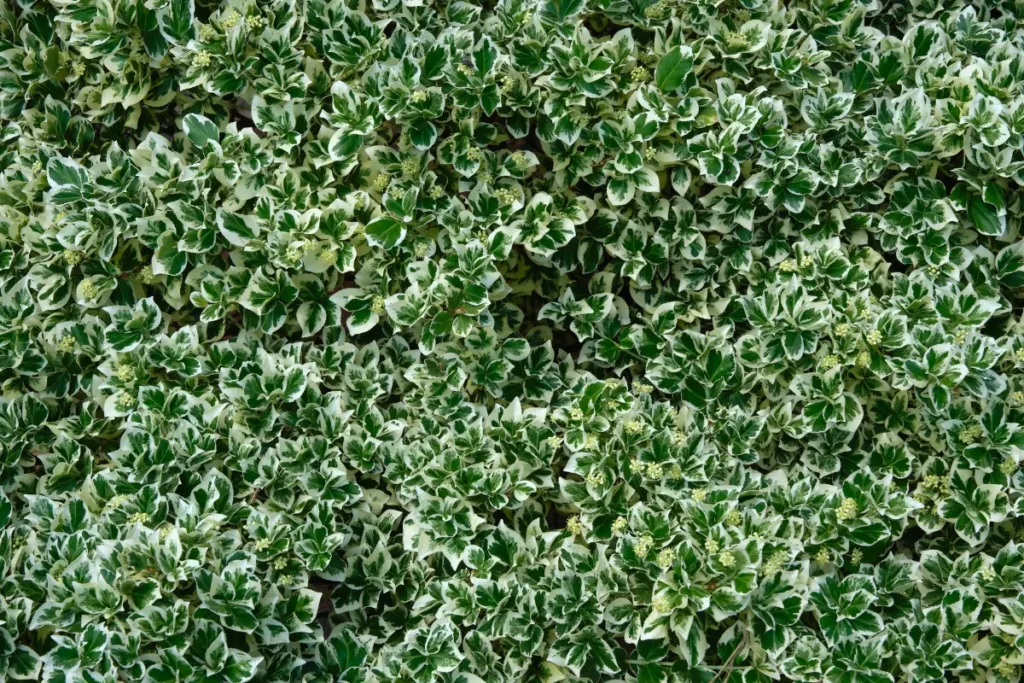
Euonymus Planipes (Flat-stalked Spindle)
- Description and Features: This species is known for its flat, red stalks and large, lobed leaves. It produces red to purple fruits and can grow up to 10 feet tall.
- Landscape Uses: Ideal for small gardens and containers, where its unique features can be showcased.
- Care: Prefers moist, fertile soil and full sun to partial shade. Regular pruning is essential to maintain its shape and size.
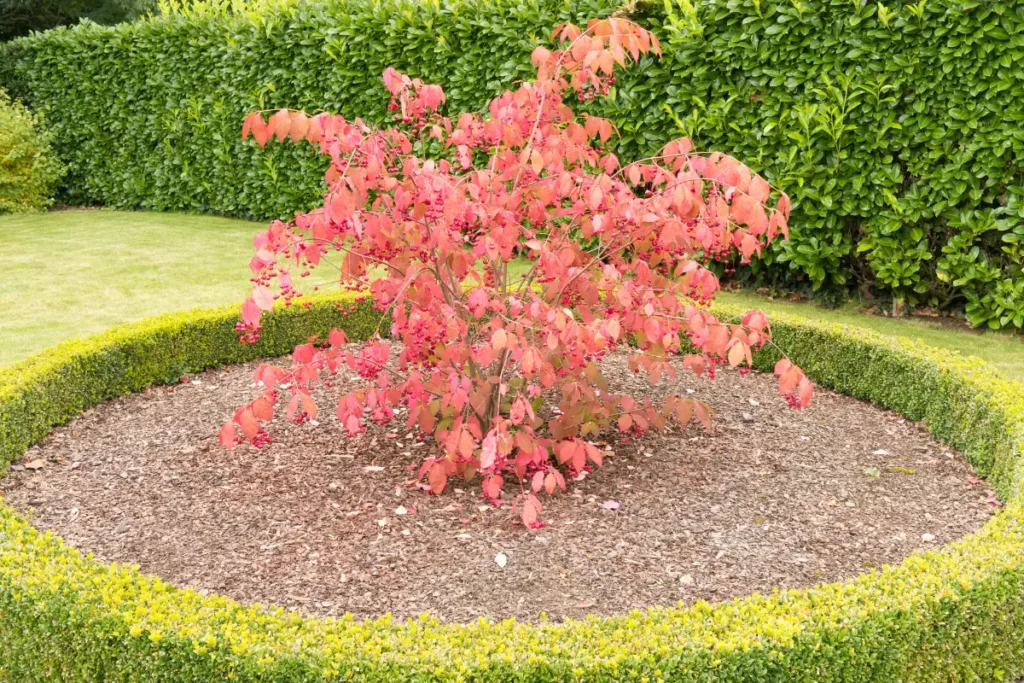
Seasonal Appeal of Euonymus Plants
Here is a brief overview of the transformative journey of caring for Euonymus plants through different seasons of the year:

Fall Brilliance
Euonymus plants are a spectacle of color and vibrancy in the fall, undergoing a stunning transformation that captivates every onlooker. The leaves, usually green throughout the year, turn into brilliant shades of red, orange, and yellow, creating a mesmerizing contrast with the surrounding foliage.
The fall brilliance of Euonymus plants is a result of the decrease in chlorophyll production, allowing the hidden pigments like carotenoids and anthocyanins to become visible. This change in color is not uniform across all varieties, with each one showcasing a unique palette, adding diversity and interest to the garden landscape.
Winter Interest
Varieties like Euonymus Fortunei maintain their lush green foliage, providing a much-needed contrast to the predominantly white and gray winter scenery. The resilience of Euonymus plants is evident in their ability to withstand freezing temperatures and snow, maintaining their structural integrity and visual appeal.
Caring for Euonymus plants in winter involves protecting them from extreme cold and wind, especially for the evergreen varieties. Mulching around the base helps in retaining soil moisture and providing insulation against the freezing temperatures.
Spring and Summer Allure
The plants experience a surge in growth, with new leaves and branches emerging, adding freshness and vitality to the garden. The flowering of Euonymus plants is a subtle affair, with small, inconspicuous flowers that are often overshadowed by the vibrant foliage.
However, the flowers play a crucial role in the plant’s life cycle, leading to the formation of distinctive fruits that add another layer of visual interest.

Cultivation and Care
Planting Euonymus requires careful consideration of the soil, climate, and location to ensure healthy growth and development. The ideal soil for Euonymus plant care is well-drained and fertile, with a neutral to slightly alkaline pH. These plants prefer a sunny to partially shaded location, allowing them to achieve optimal growth and coloration.
- Step 1: Prepare the soil by loosening it and mixing in organic matter to improve fertility and drainage.
- Step 2: Dig a hole twice the size of the root ball, ensuring adequate space for root development.
- Step 3: Place the plant in the hole, making sure it is at the same depth as it was in the container.
- Step 4: Fill the hole with soil, firming it around the base to remove air pockets.
- Step 5: Water thoroughly to settle the soil and establish the plant.
Pruning and Maintenance
Regular pruning and maintenance are crucial for maintaining the health and appearance of Euonymus plants. Pruning involves removing dead or diseased branches and shaping the plant to achieve the desired form and size.
It is also essential to monitor the plants for signs of pests and diseases regularly and take prompt action to address any issues. A balanced fertilizer applied in the spring can also help in promoting healthy growth and enhancing the coloration of the foliage.
Pest and Disease Management
Euonymus plants are susceptible to various pests and diseases, including scale insects, spider mites, and powdery mildew. Insecticidal soaps and horticultural oils can be effective against pests, while fungicides can help in controlling diseases.

Final Thoughts on Euonymus Plants and Their Care
Whether you’re a seasoned gardener with soil running through your veins or a green-thumb-in-training just starting to sow your seeds, adding some Euonymus to your plant family is like adding a splash of paint to a canvas—it brings life, color, and joy to your garden masterpiece.
So, in the spirit of all things green and growing, let’s welcome the diverse and dazzling Euonymus plants into our gardens with open arms!

Darrell has a passion for gardening that he inherited from his father. Go here to read more about the influence his father played in his love for gardening. If you want to send Darrell a quick message, then visit his contact page here.

![How to Water Indoor Plants [Plant Care 101]](https://wraxly.com/wp-content/uploads/2021/03/How-to-Water-Indoor-Plants-Plant-Care-101-1200-1024x576.webp)

![Growing Plants from Cuttings [A Simple Guide]](https://wraxly.com/wp-content/uploads/2021/03/Growing-Plants-from-Cuttings-A-Simple-Guide-1200-1024x576.webp)